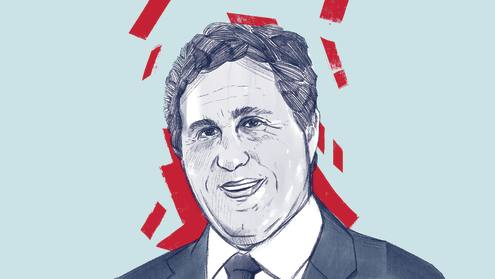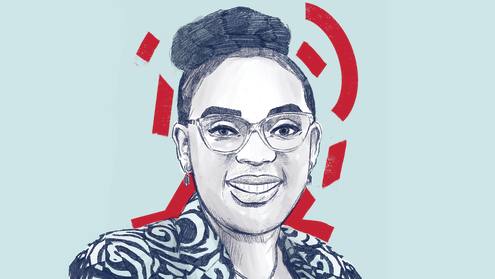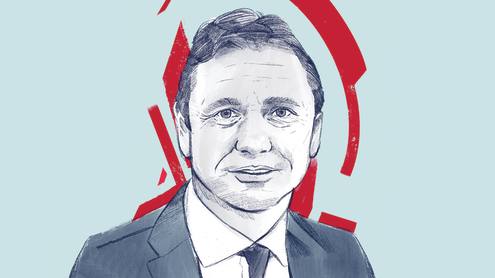Q: Kazakhstan has a long history of collaboration with Europe and you personally are a strong advocate for closer ties with the EU. What do you think Kazakhstan could gain from this closer collaboration?
A: Kazakhstan and the EU are strong commercial partners, with 48% of the foreign direct investment [FDI] in Kazakhstan coming from the EU. The region also represents 50% of Kazakhstan’s international trade. But Kazakhstan’s collaboration with the EU goes beyond trade: there has been collaboration on important security issues, such as greater border protection for the Central Asian region and fighting drug trafficking.
In June 2019, the EU announced a new strategy for Central Asia, which is aimed at supporting the growth of democracy across the region, alongside supporting a diversification of the economy with [help] for the private sector and small and medium-sized enterprises [SMEs].
There has also been support for Kazakhstan’s education policies. The country has established an education scheme to provide scholarships for Afghan youth; the goal was to educate 1000 Afghan students in professional roles. The policy has been successful, and the final 100 students are to graduate soon. After suggesting a collaboration, in October 2019 a new scheme was launched between the EU, the UN Development Programme, Kazakhstan and Uzbekistan to train 50 Afghan women in our two countries over the next five years, a programme funded by the EU.
Q: Because of Kazakhstan’s geographic position, it is also close to the huge markets in Asia. What is Kazakhstan’s relationship like with countries in Asia, both as part of China’s Belt and Road Initiative, and with other countries in the region?
A: To understand the relationship between Kazakhstan and its Asian neighbours, first of all you have to look at how the countries work together. Developing a strong transport network across the region is of considerable importance. There has been 2500 kilometres of new railway track built in Kazakhstan during the years of independence – naturally a boon to the implementation of the Belt and Road Initiative.
Because of the investment in infrastructure, it has been possible to double the container traffic coming from China to Europe and back every year for the past nine years. While now there are almost 400,000 containers moving from China through Kazakhstan annually to the EU and back again to China, we expect this number to grow to 2 million containers within a few years. Moving cargo by land is three times faster than travelling by sea, and much cheaper than transporting it by air.
The flagship project in the partnership is the development of the Khorgos dry port, scheduled to open in 2021. On completion, it will be one of the largest dry ports in the world. Funding for the project has been split 51% Kazakhstan and 49% China. There are further plans for collaboration, with China financing 55 projects with a value of $27bn.
The Belt and Road has also been important in positioning Kazakhstan as a financial centre. The Astana International Financial Centre has become a key financial hub for the region, and for the Belt and Road. We want the centre to be seen as progressive in Central Asia and beyond. This includes implementing innovations to create a favourable business environment, such as a capped corporate tax rate of 0% for the first 50 years that a company operates there. There is also a five-year waiver on work permits for employees.
Meanwhile, the Astana International Exchange got off to a strong start, thanks to partnerships with the Shanghai Stock Exchange, the Nasdaq and Goldman Sachs, and in 2018 saw its first initial public offering, [that of] Kazatomprom.
Q: Kazakhstan is still largely dependent on the oil and gas sector for its economic growth. How is the country developing into a market that increasingly wants sustainable industry and fuel?
A: At present, the economy in Kazakhstan is far from green; business is based on coal. However, the government has set environmental goals. Strategy Kazakhstan 2050 aims for 50% of electricity to be generated with renewables by 2050. Reaching this level will require a concerted effort; three years ago, just 2% of the energy generated in the country was from renewables. In order to get to 50% we have implemented a staged process, with the initial aim to reach 30% of energy generated through renewable sources by 2030.
A catalyst for change came when Kazakhstan hosted Expo 2017, with a focus on the future of energy. There were 500 new forms of energy technology presented, and the government selected 120 to develop in our country. The government also placed more emphasis on the environment when it created the role of minister of ecology, geology and natural resources, with a focus on the environment and protection.
At the grassroots level, we are trying to promote social change by educating people to be more mindful in their energy consumption. It starts with children, and teaching them to use electricity more responsibly. We have seen good developments with regards to recycling.
There also needs to be diversification in the support we receive from foreign investors. Since independence there has been $330bn invested into Kazakhstan, but 80% of that has gone to the oil and gas sector. There has been little foreign investment in the development of industries outside of the energy sector.
Q. Kazakhstan has been looking to diversify its economy. How is it adapting policy to ensure the growth and development of its industries?
A: Kazakhstan has been on a long-term path to the diversification of the economy towards industrial development and digital services. In 2009, a two-phase state programme for accelerated industrial and innovative development was implemented, targeting the mechanical, chemical and metallurgy sectors. The second phase began implementation in 2015, and has invested $12.9bn into 480 projects. These initiatives have helped industry to grow 43% in real terms to the end of 2019, and it now accounts for 11.6% of total gross domestic product.
Increasing investment has been a project for a number of years. The government’s investment programme has been in place for seven years and has promoted closer communication with issuers and legislators. Prime minister Askar Mamin established the Coordinating Council in 2019 with the aim of attracting greater levels of FDI.
Growth has been achieved with the creation of 13 special economic zones, which have conditions designed to make it easier to set up companies. Kazakhstan wants to be seen as a good place to do business. Looking at the World Bank’s Doing Business ranking, five years ago Kazakhstan was ranked in the 60s. In the latest 2020 report, it is ranked 25th.
The aim is to be in the top 20 by 2025 and it is our challenge to maintain this pace of growth to reach this target. In order to maintain our foreign investor relationships, there have been steps to improve the transparency of our business climate. The government is keen to attract further support for the SME segment, as this is increasingly seen as the backbone of our economy.
The government has focused on the development of the digital industries under the Digital Kazakhstan programme. It is expected that by 2025, the digital sector will be worth $5.7bn to the Kazakh economy. This will be achieved by focusing on specific initiatives, including developing [renamed capital city] Nur-Sultan as an influential start-up hub for the region. There have already been 80 start-ups founded in the city’s Astana International IT Start-up Hub.
Kazakhstan is also looking to leverage its existing relationships with opportunities for meaningful co-operation. The EU relationships are important to nurture as an investor base. As mentioned earlier, China is a significant strategic partner. By working together, we can provide Europe with better access to China’s market, and China with better access to five Central Asian countries. And Kazakhstan can benefit from increased trade opportunities, including the export of lamb and pork into the Chinese market.













